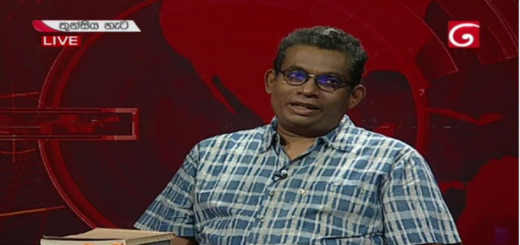Taming the Tigers of Sri Lanka’s bloody past
AT the next Olympics, one of the shooters selected to represent Sri Lanka could be a former sniper of the Tamil Tiger terrorists, once trained to kill Sri Lankans. A member of the swimming squad could be an ex-member of the Sea Tiger suicide cadre.
Their rehabilitation into athletes training to represent the state they once tried to bring down is the culmination of an extraordinary journey of hope by both sides of the 30-year civil war that ended in 2009, although there remain deep-seated problems about the government’s reluctance to accede to calls for a political solution involving autonomy for Tamils.

Critics, moreover, say the rehabilitation process – into which millions of dollars of foreign aid has been poured – is a poisoned well because the military is in charge.
“Trust is a vital component of the rehabilitation process,” says Sri Lanka’s Defence Secretary, Gotabhaya Rajapaksa. “We have to develop trust.”
The leader of the Tiger Women’s wing, Thamilini, last month volunteered to enter the rehabilitation process, ending a militant career that took her into the top ranks of the terror group as a veteran fighter and propagandist.
Significant problems persist in the mostly Tamil-populated former warzones.
Luther Udayakumaran, Tamil co-spokesman of the Sydney Reconciliation Forum which brings about 120 Australian Tamils and Sinhalese together, yesterday said many Tamils saw a political solution in Tamil-populated areas as a “necessary part of reconciliation”.
The Tigers’ former spokesman Daya Master – who works as news director of a television station in Jaffna while facing investigation over his wartime past – says he is in regular contact with other ex-cadre and that while there are no reports of significant discrimination, “Tamils who cannot get back their land due to de-mining or army activity need to have their problems solved”.
Sri Lanka’s efforts to heal wounds from the conflict received an important tick of approval this month by the UN Office for the Co-ordination of Humanitarian Affairs. “Sri Lanka’s progress – in every sense – after the end of the conflict is tremendous,” OCHA’s director, co-ordination and response division, John Ging, said.
The great majority of Tiger guerillas were offered the chance to rehabilitate themselves, and about 12,000 volunteered. Some 650 hardcore militants remain in jail and a few – including the influential Daya Master – are on bail awaiting court outcomes.
The program had its genesis in Colombia, designed for child soldiers of the narco-guerilla groups, according to Defence Secretary Rajapaksa.
The Sri Lankan program is centred around job training and education – the children forced into guerilla ranks had little or no schooling – with counselling, sport, therapy and ancient meditation techniques to offer a light beyond the blood-soaked horizons of the LTTE. A vital part of the process is learning how to get on with people.
Many of the rebels were not used to family life, the Commissioner of Rehabilitation, Brigadier Dharshana Hettiarachchi, told The Weekend Australian. “The child combatants were thrilled they could take a weapon and project themselves like a hero. They were in a terrorist organisation hiding in the jungle, and didn’t have the chance to grow up inside a family unit, respecting parents and elderly people. They were isolated from normal life. They were brainwashed.”
Counsellors made efforts to celebrate religious festivals such as Thai Pongal, Deepavali and Christmas because the young guerillas were starved of such festivities. The groups are taken all over the country to judge how Hindu Tamils live and thrive among Sinhalese Buddhists.
Successive groups have been welcomed as guests in the house of President Mahinda Rajapaksa – a man the Tigers had tried many times to kill.
Cricket matches are organised with clubs near the rehabilitation camp. It was during organised sports that 16 former militants were selected last month to train for a possible spot in the swimming, shooting, archery, karate and cricket teams at next year’s South Asian Federation Games. After that, the Olympics beckon.
Part way through the first program the government embarked on a social experiment.
The former militants had grown up as lone wolves, with their family culture forcibly replaced by a cult of obedience to a military structure. Marriage was taboo. In the first months of rehabilitation, camp staff realised that there were 100 former cadre who had formed clandestine relationships.
A grand mass wedding was organised on June 14, 2010, with Hindu and Christian ceremonies.
“If we can build this family unit we can reduce the chance of a return to violence,” says Hettiarachchi.
The commission laid on wedding sarees, garlands, jewellery, entertainers and a feast – “all the jing-bang was there!”, said the brigadier, a with a grin.
One of the couples was Victor Simson, 27, and his wife, Radhi Devi, 23, who now live freely in Mullaitivu and have a baby.
In Vavuniya, Mr Simson told The Weekend Australian how he had been punished for running away from the LTTE. “I was manacled in solitary confinement for three months in darkness,” he said. “There was space only to sit, not stand up”.
With the LTTE defeated, he and Radhi had declared themselves to the army as Tigers and entered the rehabilitation process.
The couple are shunned by relatives – a common problem for ex-guerillas who face odium for having brought terror to their communities and, after all that, for having lost the fight – and must make their way alone, their little unit boosted by the baby.
Like other guerillas interviewed, Mr Simson and his wife face an uncertain future with no permanent jobs, no home of their own and few links in the community into which they have been released.
They sometimes face payback for the humiliation over 30 years when young Tigers – drawn mostly from the under-privileged lower Hindu castes – upheld an iron regime, lording it over their elders and higher castes. Education and job training is the priority in rehabilitation; the government knows that releasing ill-equipped youth into the depressed areas from which they had been recruited into the LTTE is a recipe for disaster.
Former child soldiers have been sent to school, and in the past two years more than 300 have passed the A-Level exams and about 50 have entered university. Older guerillas are given training and business loans.
Arun Tambimuttu, whose father, a Tamil nationalist MP, was gunned down by the Tigers in 1989, told The Weekend Australian former combatants faced problems because of their violent history. Mr Tambimuttu is a political organiser for the Sri Lanka Freedom Party in the eastern city of Batticaloa where former militants – including 5000 rehabilitated ex-Tigers – are a visible presence: many are amputees; many bear bullet and shrapnel scars.
These Tamils have to live alongside others of rival groups who had killed their relatives. Mr Tambimuttu knows more than one Tamil whose entire family had been killed by other guerillas.
“It is a very complex scenario for the Tamil community to deal with, and this is where reconciliation is even more challenging than a simple Tamil-Sinhala equation.
By DINOO KELLEGHAN




